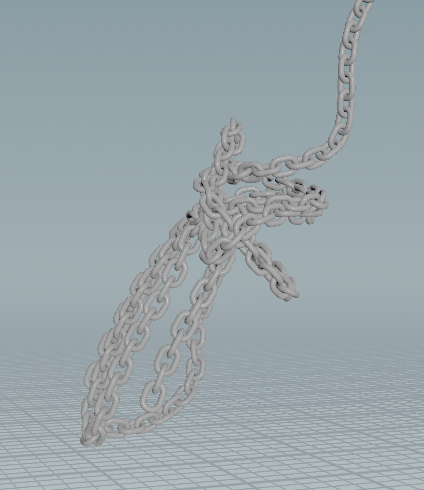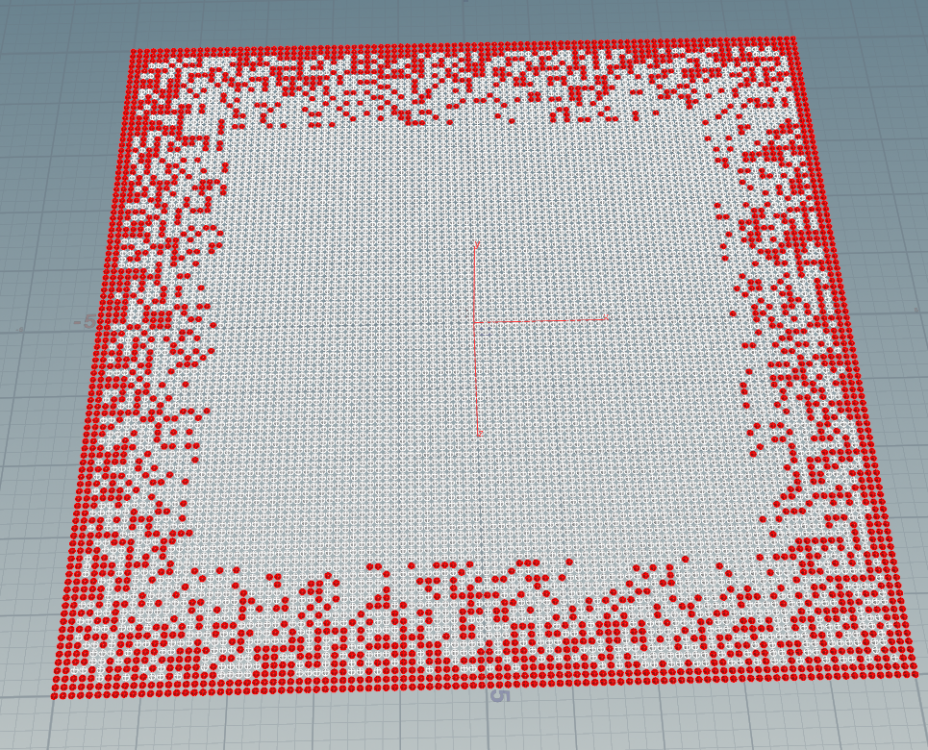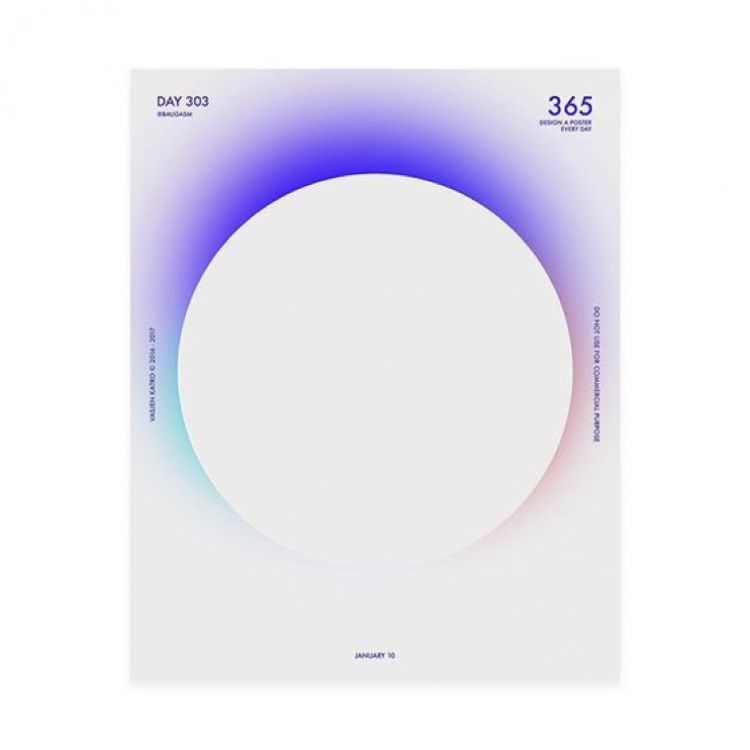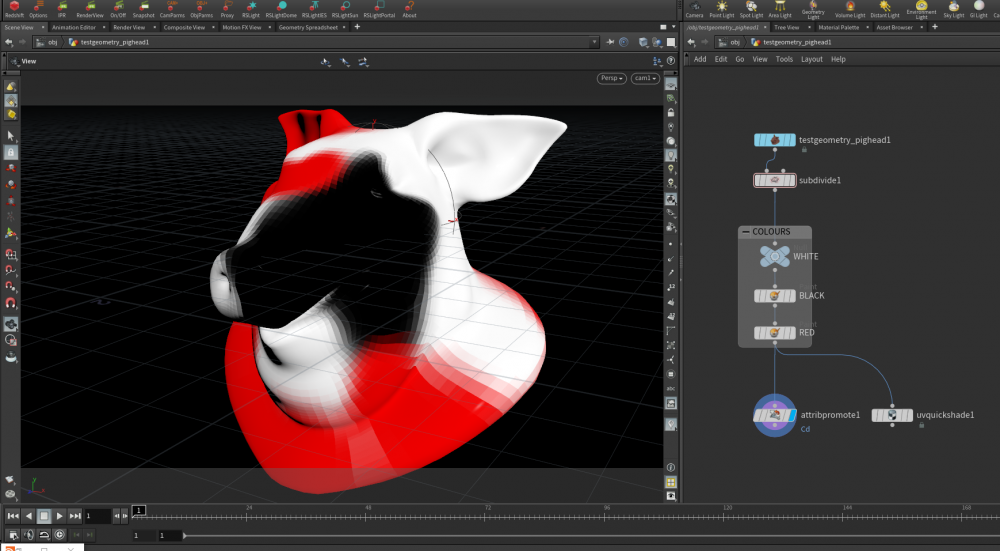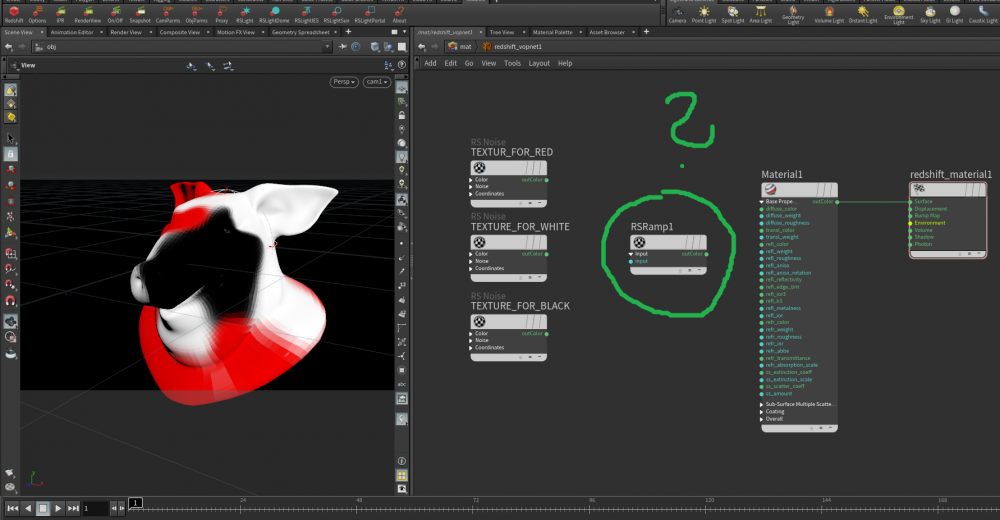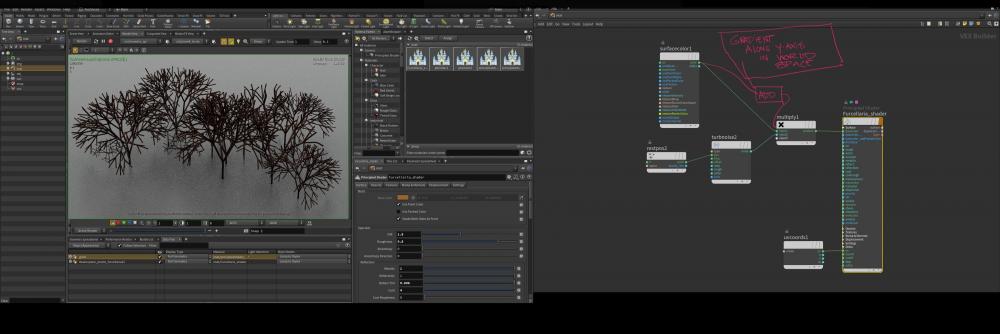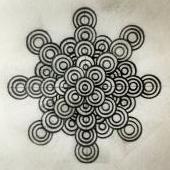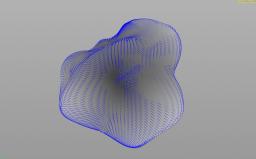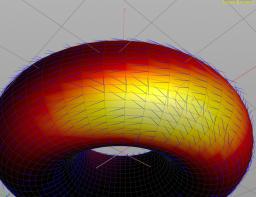Search the Community
Showing results for tags 'gradient'.
-
After more than 5 months of unimaginable amount of work, I am proud to release my first in-depth Houdini course on VEX More details in the video description and the website. Active Patreon members will receive additional discounts proportional to their lifetime support (25% of their lifetime support). Message me on Patreon for your discount coupon. Enjoy! 01 - Introduction [Point Clouds] 02 - Introduction [pcopen() vs pcfind() vs nearpoints()] 03 - Introduction 04 - Implementation 05 - pcfilter() Implementation for pcfind() 06 - pgfind() 07 - pcfind_radius() 08 - Excluding the Current Point & Ad-Hoc Groups 09 - Finding Min & Max Neighbour Points [Unique Pair Matching] 10 - Concept 11 - Implementation [Camera Based Occlusion with Variable Pscale] 12 - Concept 13 - Implementation [Uniform Point Distribution Over Polygonal Surfaces [Point Relaxation]] 14 - Concept 15 - Implementation 16 - Decoupling Operators [Convolution Kernels] 17 - Introduction 18 - Border Handling [Connectivity & k-Depth Point Neighbours Using Edges] 19 - Introduction 20 - Concept 21 - Implementation [Connectivity & k-Depth Point Neighbours Using Primitives] 22 - Concept 23 - Implementation [Extending k-Depth Point Neighbours Using Edges] 24 - Introduction 25 - Concept 26 - Implementation [Extending k-Depth Point Neighbours Using Primitives] 27 - Concept 28 - Implementation [smoothstep() [Cubic Hermite Interpolation]] 29 - Concept 30 - Implementation [Shaping Functions] 31 - Introduction 32 - Implementation 33 - Blurring Attributes [Sharpening Attributes Using Unsharp Mask] 34 - Concept 35 - Implementation [Generalizing the Kernel Code to Handle All Attribute Types] 36 - Concept 37 - Implementation [Attribute Gradient] 38 - Introduction 39 - Concept 40 - Implementation [Gradient Ascent & Descent] 41 - Planar Geometry - Introduction 42 - Planar Geometry - Concept 43 - Planar Geometry - Implementation 44 - 3D Geometry [Contour Lines] 45 - Introduction 46 - Concept 47 - Implementation 48 - Heightfields [Geometric Advection - Orthogonalization & Flowlines] 49 - Introduction 50 - Concept 51 - Implementation [Clustering & Quadtrees] 52 - Concept 53 - Implementation [Adaptive Subdivision] 54 - Introduction 55 - Implementation 56 - Hashing [Adaptive Subdivision] 57 - Improving OpenSubdiv Catmull-Clark Subdivision Surfaces Algorithm 58 - Half-Edges [Adaptive Subdivision] [Aggressive Performance Optimizations] 59 - Eliminating Groups 60 - Custom Fusing In VEX 61 - Recreating Proximity Structures In VEX 62 - Get Unshared Edges In VEX 63 - Final Optimizations [Limit Surface Sampling] 64 - Introduction 65 - OpenSubdiv Patches 66 - Moving Points to the Subdivision Limit Surface 67 - Scattering Points on the Subdivision Limit Surface 68 - Generating a Point Cloud on the Subdivision Limit Surface 69 - Pre-Generating a Point Cloud on the Subdivision Limit Surface 70 - Creating Isolines on the Subdivision Limit Surface [Adaptive Subdivision] 71 - Computing Surface Normals from the Subdivision Limit Surface [Custom Subdivision Surfaces] [Splitting Edges [Edge Divide]] 72 - Concept 73 - Converting Edges to Primitives 74 - Creating New Edge Points [Rebuilding Polygons] 75 - Concept 76 - Implementation 77 - Preserving & Interpolating Attributes 78 - Multithreading by Connectivity 79 - C++ vs VEX 80 - Preserving Groups 81 - Final Optimizations [Implementing Bilinear Subdivision] 82 - Introduction 83 - Concept 84 - Modeling Test Geometry 85 - Starting from Edge Divide 86 - Creating New Face Points 87 - Creating New Edge Points [Creating New Closed Polygons] 88 - Concept 89 - Implementation [Creating New Open Polygons] 90 - Concept 91 - Implementation 92 - Preserving Primitive Groups & Interpolating Primitive Attributes [Preserving Vertex Groups & Interpolating Vertex Attributes for Closed Polygons] 93 - Concept 94 - Implementation 95 - Preserving Vertex Groups & Interpolating Vertex Attributes for Open Polygons 96 - Implementing Iterations 97 - Preserving Literal Groups 98 - Creating Neighbour Primitives 99 - Final Changes 100 - Testing On Complex Geometry [Implementing Catmull-Clark Subdivision] 101 - Introduction [Closed Surfaces] 102 - Rules [Gathering Edge & Face Points] 103 - Concept 104 - Implementation [Computing Weights for New Edge Points] 105 - Concept 106 - Implementation [Computing Weights for Original Points] 107 - Concept 108 - Implementation [Attribute Interpolation] 109 - Concept 110 - Implementation [Boundary Interpolation Rules for New Edge Points] 111 - Concept 112 - Implementation [Boundary Interpolation Rules for Original Points] 113 - Concept 114 - Implementation 115 - Open Surfaces - Handling Corner Points 116 - Handling Non-Manifold Topology [Open Polygons] [Computing Weights for Original Points] 117 - Reverse Engineering OpenSubdiv 118 - Implementation [Computing Weights for New Edge Points] 119 - Reverse Engineering OpenSubdiv 120 - Implementation 121 - Handling Open Polygonal Curves [Handling Mixed Topology] 122 - Full Geometry 123 - Sub-Geometry 124 - Testing On Complex Geometry [Performance] 125 - Profiling [Grouping Boundary Edges from Primitive Group] 126 - Concept 127 - Implementation 128 - VEX vs C++ [Caustics] 129 - Introduction 130 - Sea Caustics 131 - Pool Caustics [Enhancing Gradient Ascent, Descent & Contour Lines] 132 - Introduction 133 - Implementation 134 - Tracing Both Directions [Updating Distances Properly] 135 - Concept 136 - Implementation 137 - Looping Streamlines Problem 138 - Adding Trace Parameter [Evenly Spaced Gradient Ascent, Descent & Contour Lines] 139 - Introduction 140 - White Paper 141 - Concept 142 - Constructing the For Loop Network 143 - Improving Seed Points Selection for Tighter Packing 144 - Implementing Separation [Enforcing Separation Using Self Proximity] 145 - Concept 146 - Implementation 147 - Optimization 148 - Final Tweak 149 - Applying to 3D Geometry [Custom Subdivision Surfaces] [Extreme Performance Optimizations] 150 - Introduction 151 - Establishing Baseline for Performance 152 - Updating Attribute Interpolate Nodes 153 - Interpolation vs Copying 154 - Optimizing Input Group 155 - Caching Geometry Data 156 - pointedge vs pointhedge 157 - Getting Primitives from Half Edges 158 - Eliminating Edge Groups 159 - Parallelizing Geometry Creation for New Primitives [Unrolling Loops] 160 - Parallelizing Geometry Creation for New Edge Primitives [Unrolling Loops] 161 - Finalizing the Network 162 - Performance Profiling the Latest Version 163 - Conclusion
- 50 replies
-
- 15
-

-

-
Hi guys, In a Pyro simulation, I would like to retrieve the gradient of a field like "density", and then apply the velocity to a range of it (for example where density is 0.2). I tried to use the gradient mode of the "Gas Analysis" DOP, without success I would appreciate any idea... Thanks for helping. Pyro_Gradient.hip
- 8 replies
-
- gas analysis
- gradient
-
(and 1 more)
Tagged with:
-
Is there an easy way to blend two vdbs using for example a gradient on the Y axis? i have a displaced fog vdb and i want the displacement to happen in a certain area. Can i control that with a mask somehow inside the volume vop or do i need to blend the fog vdb without the displacement? Any workflow tips?
-
Hey folks, proud to present LYNX Tools, a collection of production proven open source tools to accelerate your workflows! All mentioned tools are free to download via the links below and are licensed with a full HoudiniFX license. All Houdini Assets have complete Houdini native documentation available. Repository: https://github.com/LucaScheller/VFX-LYNX Lastest stable release: https://github.com/LucaScheller/VFX-LYNX/releases Please give them a test drive, so we can improve them further Roadmap | https://github.com/LucaScheller/VFX-LYNX/projects/1 So far there are three tools: LYNX_force_general | Tweak your sims with this all purpose & intuitive force field. Built to mimic force fields in other DCC applications, but with support for more features and a natural Houdini user experience. https://www.lucascheller.de/vfx/2019/03/24/vfx-lynx-houdini-force-general-asset/ LYNX_fabric | Create fabric/weave patterns with ease. Perfect for creating that holiday sweater you never wanted. https://www.lucascheller.de/vfx/2019/03/16/vfx-lynx-houdini-fabric-asset/ LYNX_velocity | Get control of your velocities via an intuitive UI or groom them for absolute fine tuned control. https://www.lucascheller.de/vfx/2018/11/01/vfx-lynx-houdini-velocity-asset/ More info on my website, including full release logs: https://www.lucascheller.de/blog/ Houdini User Group Munich Presentation: https://vimeo.com/334887452
- 13 replies
-
- 10
-

-

-
Hello everyone, New to Houdini I’m facing one problem: How to make a four-corner gradient noise deformation on a dedicated surface ? I want to make an evolutive noise displacement in the center but flat near to the border. Same as heightfield_maskbyobject node but with terrain node or in attribvop (did’nt find how to make four corner gradient ramp) Thanks in advance Br,
-
Hi! I'm creating a chain with the chain link. I'm trying to set a color gradient ramp from black to white, from beginning to end. Any ideas to achieve it? Thanks a lot!
- 4 replies
-
- chain
- chain link
-
(and 1 more)
Tagged with:
-
Hi guys, I m sure this is gonna be a very simple exercise for ya. What I want to get is to create a gradient/smooth movement of the ripples for selected points, defined by painted colour. Where its darker the ripples should be more prominent and points should be moving strongly, and also opposite way, where its lighter it should be less visible and points should be almost static. Now the ripples work same for all of the selected points, and it creates very sharp edge on surface of the model. I hope its undersandable from this super-short brief. I have some ideas about how to multiply the position of the ripples added to @P by @Cd but i do not know how to combine these two values in pointwrangle. I am sure u guys can help me out! Thank u guys for any advices. issue_ripples.hip
-
Hello, I need to create a radial gradient on a gird, my idea was to use a addpoint, to add a point at the center of the grid. Then connect it to a point wrangle and calculate the distance between it to the other points. Although, I am not sure on how to execute this idea. Thanks!
-
Hi all, I'm looking into a way to apply a "feather" effect to a group transfer. I this case I would like to have a grid of points where the edges are selected with a gradient to apply a higher level of detail. (See image) My thoughts sofar was to create a box around my grid and use group transfer with a distance threshold. However, this cuts off rather abruptly causing less of a gradient and more of a border. I've made a .hip file (attached) where I've attempted a rudimentary "bleeding effect" What I did for those who don't want to check the .hip is selected the border, then over a series of nodes selected a higher random number of points with a smaller distance threshold. This works though it is very messy/inefficient and isn't very user friendly. My question is how to approach this in a more procedural manner? And a follow-up question would be how to apply such a gradient grouping based on other objects, for example, a camera. Though this is less needed and more of a pondering. Any help would be appreciated. -Thomas Gradientgroupselect.hip
-
Hi all, I'm approaching something in H/Redshift which I've not really attempted before - So was interested to see if there were any thoughts surrounding it. Basically I'm trying to recreate the soft/feathered gradient seen in the attached ref image. The inner hard edge I'm planning to achieve with some transformed geo floating above the grid below, however the super subtle feathering is challenging me a little. At first I though of using a simple attribVOP on a grid > point Cd. However I'm nut sure how to achieve the outer feather using that technique... Similarly with an attrib transfer from geo > grid it seems not very feasible to get the extreme feather unless the mesh is crazy high res? I'm continuing to experiment & look through forum threads, but if anyone has some suggestions/tut links/examples etc. would be very much appreciated! (Worth noting system = H17.5.258 & RS 2.6.43) Thanks in advance!
-
Hi, I'm working on some hair simulation for a groom setup using the grooming tools. I've been trying to get a stiffness falloff working so that the hairs are very stiff at the root, but become less so at the tip of the hairs, but haven't been able to get anything that works yet. Ideally I'd like to be able to put a ramp gradient along the guide curves that can then be multiplied against the bend and stretch stiffness values. Is this an approach that could work? Or should I be trying to adjust the constraints instead? I've attached a sample scene using a sphere with a gradient multiplier along the curves that I'm trying to get to work. any insights would be very appreciated! furStiffness.hip
-

redshift Ramp between three textures - REDSHIFT
herr.ja posted a topic in Lighting & Rendering + Solaris!
Good evening! Can I ask U guys for advice? Im trying to create ramp between three textures (but with same uv map), defined by paint SOP on pighead testing geo. And what I want to ask U is: Does it possible to somehow assign different textures for each color, in redshift? Any advice will be very, very helpful to me! Thank u guys so much! textures_issue.hip0.hip -
Hello there!! I have this sphere, and I want its extrusions to have a gradient in its colors. The pick to be the more intense and the base to have the same color with the base of the sphere. How can i do that? Please help!! cheers!
-
Hello, I was following a tutorial on how to create a sun in houdini, and I came across a technique used to keep advected points bound to the original surface where they were scattered from (in this case, a sphere). For the purpose of advecting the points, it was created a popnetwork with a curl noise affecting the velocity. To keep the points moving on the surface, the instructor did 2 things: -Turn the sphere into a mesh and convert it into a VDB. -Create a POP VOP, with a Volumesample and a Volumegradient, reading from the vdb converted sphere. After this, the gradient was inverted and multiplied by the output of the Volumesample node and added to the original positions, inputing into the new positions. This last point got me lost. The instructor referenced in some abstract drawings the utility of both this nodes, the Volumesample and Volumegradient and I tried to cross check with Sidefx's Houdini documentation but it didn't have that much info on the subject. Can some one briefly explain what is happening inside both this nodes, and their respective outputs? Thanks.
-
Hi everyone, I am dabbling with volumes recently and I wish to know how can I have a fall-off of volume, gradiently? (see image attached). I have zero to minimal knowledge of volume vop. Forum Users talk about volume sample and volume gradient when I search on forums regarding this issue. **Additional Info-- Better still if I can control, say, point A is densest and point B is thinnest.** Thank you in advance.
-
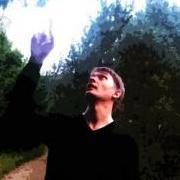
Gradient ramp along Y-axis in shader
marque_pierre posted a topic in Lighting & Rendering + Solaris!
Hello guys, I am trying to build a shader, that in addition to what I have in the image, layers a black and white gradient in along the Y-axis. I am certain it must be very straight forward for anybody with more than a week of Houdini experience. Could anybody please point me in the right direction or outline the steps? Thanks in advance! -
Hey everyone! Here's a demo of some point cloud tools I created to calculate concave and convex curvature as well as gradient and curl direction, also sharpening. Forgot to mention in the demo that the curvature calculation is a great way to do differential growth by advection along normal * curve * noise * parm. Also, the curl calculation can be used to make grass patches and groom fur by orienting curves along the direction to add swirly variance. There's a lot of ways these tools can be handy, interested to see what you all come up with! Let me know if you have any questions, enjoy! curveGradientCurlSharpen_v002.hipnc
-
- 12
-

-
- point cloud
- sharpening
-
(and 8 more)
Tagged with:
-
Hello,I'm attempting to create the slitscan/timeshift effect. I'm creating a vector array in a for loop, each loop has an attrib from map and a wrangle that appends Cd to a vector array. It works when the attrib from map is always reading from the same file. When I change the attrib from map file read expression to anything that has to do with $F or the meta nodes iteration Houdini crashes. I have a test scene that has documentation and even nodes setup to create test frames to work with.If it is a matter of the way that multiple files cannot be read at once please let me know. If someone knows of a better way to read from multiple files at once and/or achieve this effect please let me know. I'm aware that after effects has this effect and uses gradients to determine which frame to look up color from. While that method is great, I'd like to be able to write the gradients/lookups in vex to achieve results. Any help greatly appreciated. -T concept_025_slitScan_v001.hiplc
-
I am trying to scatter some points on a circle. But I want the points to be scattered more near the center and less towards the outer side. In the old Houdini Scatter I could do it by making my Circle Primitive type to "Polygon" and then uncheck "Divide Non- Convex Polygon" on the scatter node. However, in the new scatter node of Houdini 14 and 15, this option is not available. Here is what I am trying to achieve, this is with the old scatter node. This is what I am getting with the new scatter node. Please help.
-
Hello, I'm new to houdini (maya user). I have some animated trails that I've turned into a mesh light. I'd like to get the trails to do two things: - emit a ramp from red to yellow - fade off at the end of the trail. I'm using the latest redshift_v2.0.52 - that has the new ramp node. And Houdini 15.5.523. I can get a ramp to work with the incandescent shader. But it would be great to use the mesh light. Thanks! Light_Trail_Mesh_v12_clean.hiplc
-
I saw this on vimeo https://vimeo.com/124701487 really want do something like this for my painting https://vimeo.com/125311013 I'm new in houdini How can i drive particle flow with a picture Gradient and match the colour in Dop
-
I'm trying to create lines in the centre of an object. So I guess the theory is that I need to calculate the density of the object and then create points at the centre of the object that can be connected with a add sop? Here's what I have so far (no VOPSOP added yet) Any ideas? MeshtoLines.hipnc
-
How can I find for every point, which one of its 8 surrounding points (not only out of the 4 neighbours)(pic.2) has the maximum value of an attribute ? I want to create a vector at each point that points to the direction that the attribute increases(pic.1) I believe this is called Attibute Gradient. I want to achieve that in VOPS. I have made some progress but something is not right.(pic.3) I know for sure that one of my mistakes, is that when ask from pcopen the 8 closest points, one of them is the lookup point itself.. How do I exclude it? Any help or idea is more than welcome!!! Attribute Gradient 1.hipnc
-
I am trying to access the data in a VDB sdf volume container that I use as a 3rd input in my node. I managed to install the openvdb headers and everything seems to compile just fine. All I'd like to do is basically access the distance and gradient values in the vdb sdf, given a world space position. I found this beautiful method which seems to address the gradient question... UT_Vector3 GEO_PrimVDB::getGradient ( const UT_Vector3 & pos ) const And this is the code snippet I am using: GU_Detail *sdfInput = new GU_Detail; duplicateSource(2, context,sdfInput); GU_PrimVDB myVDB(sdfInput,0); UT_Vector3 samplepos(1.0,0.0,0.0); UT_Vector3 gradient; gradient=myVDB.getGradient(samplepos); // <--- CRASH [/CODE] ... but when I try to use it , Houdini crashes (it crashes only on the line where I use getGradient method, it doesn't crash when I define *myVDB) I couldn't find the method to access the distance value by the way. I am pretty sure I am doing something terribly wrong cause of my limited c++ knowledge Can someone help me to correct the above code snippet and add the method to access the 'distance' data ?




